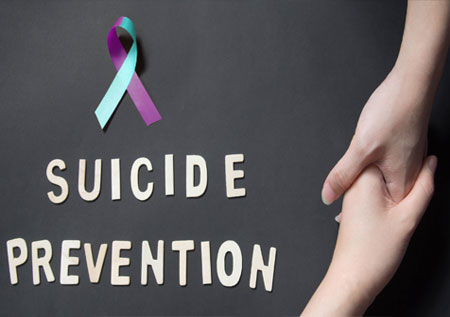
Beyond the Diagnosis: Why Suicide Prevention Must Be Part of Cancer Care
Posted on 12th Sep 2025, by Admin
Even though World Suicide Prevention Day has just passed, the message it carries remains urgent. Suicide among people living with cancer — especially oral cancer — is a growing but often overlooked public-health crisis. Two recent studies, one from India and one from the U.S., paint a sobering picture but also point to clear opportunities for action.
The Indian Perspective: Over 10,400 Suicides Linked to Cancer (2001–2014)
A landmark analysis published in the Indian Journal of Cancer examined national data between 2001 and 2014. It revealed:
- 10,421 suicides among people living with cancer — about 744 per year.
- Most victims were men aged 45–59, followed by younger adults aged 30–44.
- Southern and eastern states like West Bengal, Kerala, Andhra Pradesh, and Maharashtra showed particularly high numbers.
These findings highlight how a cancer diagnosis intersects with financial pressures, limited access to mental health support, stigma, and chronic pain — creating a perfect storm for despair.
The Global / U.S. Perspective: Oral Cancer and Suicide Risk
A large population-based study published on PubMed focused on oral cancer patients in the United States. Key takeaways:
- The suicide rate among people with oral cancer is approximately 54.5 per 100,000 person-years — about 3.5 times higher than the general U.S. population.
- Timing matters: nearly 18% of suicides occur within the first year after diagnosis, 40% within three years, and 55% within five years.
- Higher risk is associated with male gender, single primary tumors, and factors tied to appearance and function (speech, eating), which profoundly affect self-image and social interaction.
Common Threads Across Borders
Although these studies were conducted in different contexts, their conclusions converge:
- Cancer is not just a physical illness — it’s an emotional and social crisis.
- Early post-diagnosis period is high-risk. The shock, uncertainty, and disruption to identity and daily life can be overwhelming.
- Stigma and isolation amplify mental health risks.
- Mental health services are under-integrated into oncology care worldwide.
Why This Matters Now
Even though World Suicide Prevention Day is over, the need for action is ongoing. These studies are a call to:
- Integrate mental health care into cancer treatment plans — including screening for depression, anxiety, and suicidal thoughts from the moment of diagnosis.
- Train oncology teams to recognize psychological distress and refer appropriately.
- Expand access to counseling, support groups, and community networks — especially in low-resource settings.
- Reduce stigma by making it normal to discuss mental health alongside chemotherapy, surgery, or radiotherapy.
- Address financial and practical burdens that worsen hopelessness, through policy reforms and charitable support.
A Human Message of Hope
Behind each statistic is a person — a parent, spouse, friend, or colleague. Many people facing cancer silently shoulder fear, pain, and shame. By acknowledging the mental-health dimension of cancer care, we can help prevent suicide and restore dignity, hope, and connection.
If you or someone you know is living with cancer and struggling emotionally:
- Talk to your doctor or nurse about how you’re feeling — emotional pain is part of the illness, not a weakness.
- Reach out to mental health professionals, helplines, or support groups — even one conversation can make a difference.
- Remember you’re not alone — support systems exist, and asking for help is an act of courage.
References:
1. Indian Journal of Cancer: A study on suicide among Indians living with cancer (2001–2014)
2. PubMed: Suicide among patients with oral cavity cancer (PMID: 39094300)
